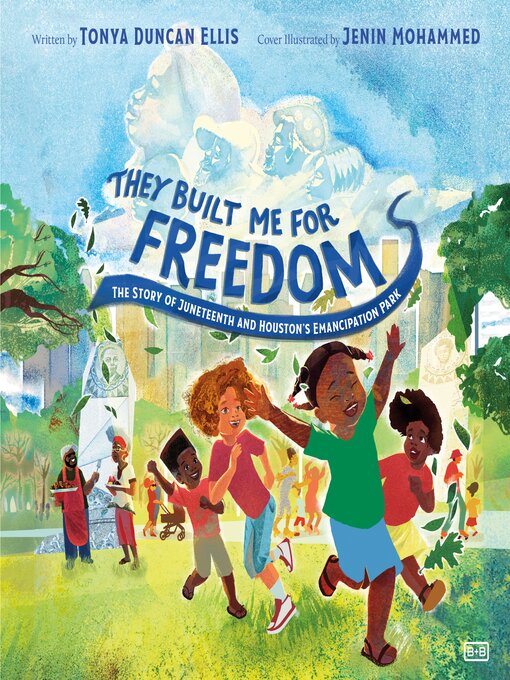A moving book about the history of Emancipation Park in Houston, Texas—and the origins of Juneteenth.
When people visit me, they are free—to run, play, gather, and rejoice.
They built me to remember.
On June 19, 1865, the 250,000 enslaved people of Texas learned they were free, ending slavery in the United States. This day was soon to be memorialized with the dedication of a park in Houston. The park was called Emancipation Park, and the day it honored would come to be known as Juneteenth.
In the voice and memory of the park itself—its fields and pools, its protests and cookouts, and, most of all, its people—the 150-year story of Emancipation Park is brought to life. Through lyrical text Tonya Duncan Ellis and Jenin Mohammed have crafted an ode to the struggle, triumph, courage, and joy of Black America—and the promise of a people to remember.





